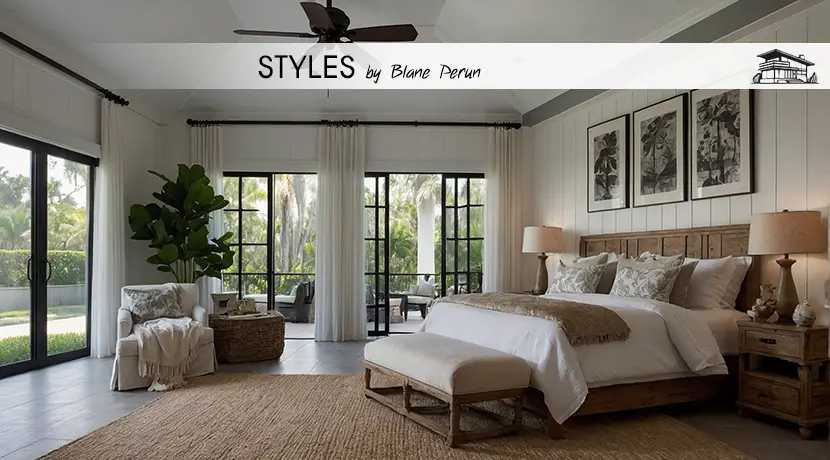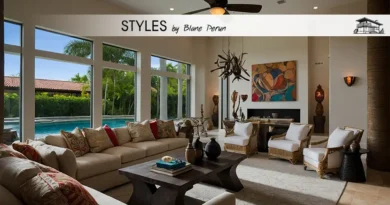Farmhouse Style
Embracing the Rustic Charm: A Dive into Farmhouse Interior Design
In recent years, the allure of farmhouse interior design has surged, captivating the hearts of many with its warm, welcoming ambiance and timeless appeal. This design philosophy intertwines simplicity with sophistication, blending rustic elements with modern comfort to create spaces that feel both nostalgic and contemporary. At its core, farmhouse interior design celebrates the beauty of natural materials and textures, inviting a sense of calm and connection to the simpler times of rural life.

The Pillars of Farmhouse Aesthetics
Authentic Materials and Textures
In the realm of farmhouse interior design, the authenticity of materials plays a pivotal role. The use of natural wood, from reclaimed barn wood to polished oak, imbues spaces with warmth and history. For instance, the scientific name for oak, Quercus, encompasses a variety of species known for their strength and durability, making them ideal for statement pieces like dining tables or ceiling beams. Incorporating stone, another hallmark of farmhouse style, adds an element of ruggedness and connection to the earth, grounding the design in a sense of place.
Timeless Furniture and Décor
Farmhouse furniture often features a mix of vintage finds and new pieces that emulate a bygone era. The craftsmanship and patina of antique furnishings tell stories of past lives, adding depth and character to the interior landscape. Upholstered pieces in natural fibers like cotton (scientifically known as Gossypium) or linen (Linum usitatissimum) offer comfort and practicality, echoing the design’s roots in functionality and ease of living. Décor elements, from wrought iron accents to handwoven baskets, complement the furniture, reinforcing the rustic aesthetic.
A Canvas of Colors and Patterns
Neutral Palettes with Pops of Color
The color scheme in farmhouse interior design typically revolves around a neutral palette, creating a serene and spacious feel. Shades of white, cream, and soft greys form the backdrop, reminiscent of the natural hues found in a rural setting. Strategic pops of color, whether through a vintage Persian rug or a bouquet of wildflowers, inject life and vibrancy into the space without overwhelming the senses.
Incorporating Textiles and Patterns
Textiles play a significant role in adding layers and textures to a farmhouse-inspired home. Plaid and gingham, traditional patterns associated with rural life, bring a touch of whimsy and nostalgia. The strategic use of these fabrics in curtains, table linens, or throw pillows can unify a room’s design while adding visual interest and warmth.
Lighting and Accessories: The Finishing Touches
Illuminating with Natural Light and Fixtures
Lighting in farmhouse interior design is paramount, with an emphasis on maximizing natural light to create airy and bright spaces. Large windows, often unadorned or dressed in sheer fabrics, allow sunlight to flood in, enhancing the home’s connection to the outdoors. When it comes to artificial lighting, fixtures such as wrought iron chandeliers or vintage-style sconces add both illumination and decorative elements, echoing the design’s rustic roots.
Curating a Collection of Accessories
Accessories in a farmhouse setting are carefully curated to balance aesthetics and functionality. From earthenware pots to rustic wooden frames, each piece contributes to the narrative of the space, evoking a sense of warmth and personal history. The incorporation of indoor plants, like the resilient Sansevieria or the lush Ficus lyrata, introduces a touch of nature and vibrancy, reinforcing the home’s connection to the natural world.
In the end, Farmhouse Interior Design is more than just a style; it’s a reflection of a lifestyle that values simplicity, authenticity, and the beauty of everyday moments. As we wrap up this exploration into the rustic charm of farmhouse aesthetics, it’s clear that this design philosophy offers a timeless appeal that resonates with those looking to create a home that feels both welcoming and lived-in.

FAQs about Farmhouse Interior Design
What is the hallmark of farmhouse interior design?
Farmhouse interior design is characterized by its use of natural materials, neutral color palettes, and a blend of rustic and modern elements. The design emphasizes comfort and practicality, incorporating vintage furnishings and accessories that add character and warmth to the space.
How can I incorporate farmhouse design elements in a small space?
Even in smaller spaces, you can embrace farmhouse design by focusing on key elements such as using neutral colors, natural textures, and multifunctional furniture. Opt for open shelving, vintage wall art, and strategic use of textiles like rugs and throws to bring in the farmhouse charm without overcrowding the space.
Can farmhouse interior design be combined with other styles?
Absolutely! Farmhouse design pairs beautifully with other styles like industrial, modern, or bohemian. The key is to maintain a balance between the rustic elements of farmhouse aesthetics and the clean lines or eclectic touches of the other styles, creating a cohesive and personalized look.
What kind of lighting is best for a farmhouse-inspired home?
In farmhouse interior design, natural lighting is prioritized to create a warm and inviting atmosphere. For artificial lighting, opt for fixtures with rustic finishes like wrought iron or distressed wood, and consider incorporating vintage or reclaimed pieces for added character.
Are there eco-friendly options for achieving a farmhouse look?
Yes, sustainable practices align well with farmhouse interior design principles. Consider using reclaimed wood for furniture or architectural elements, investing in natural and organic textiles, and choosing eco-friendly paint options. Incorporating vintage pieces not only adds authenticity to the design but also promotes a more sustainable approach by reusing existing items.





